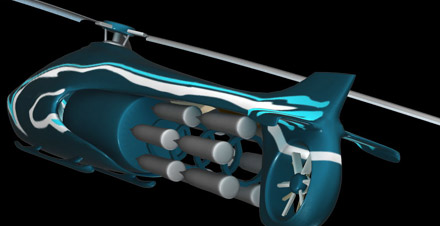catch ~Next ~End ~Home!
See also Patrol and Military design!
Epsilon series Business Sensor FS4B Design:
[001]~ Designed to fit
[002]~ Air droppable buoys
~~~~~~~~~~~~~~~~~~~~~~~~~~~~~~~~~~~~~~~~~~~~~~~~~~~~~~~~~~~~~~~~~~~~~~~~~~~~~~~~~~~~~~~
[001] FS4B Design ~ Business Sensor: ~ Designed to fit
Designed to fit:
~ several business FS4B sensors can be loaded with freedom helicopter FC4B
~ freedom base FB4B can store a lot of FS4B sensors for FC4B helicopters

catch: ~[content] ~[next]!
~~~~~~~~~~~~~~~~~~~~~~~~~~~~~~~~~~~~~~~~~~~~~~~~~~~~~~~~~~~~~~~~~~~~~~~~~~~~~~~~~~~~~~~
[002] FS4B Design ~ Business Sensor: ~ Air droppable buoys
Air droppable buoys as a comparison:
~ Small & Smart Insc designs FS sensors together with it's partners
~ Experience already gathered is used by collaboring with companies, research institutes and universities
~ Similar kind of challenges such as levelling arise also in other environments and systems
Links:
~ see International Arctic Buoy Program Air Droppable RAMS (ADRAMS) Buoy
Summary:
~ The ADRAMS buoy was developed to provide remote tracking of drifting sea ice near the Arctic Coast
~ and adapted for use by the International Arctic Buoy Program.
~ Because it can be dropped from aircraft,
~ the ADRAMS buoy costs less to deploy than sensing systems requiring manual installation
~ and allows monitoring of areas and seasons previously inaccessible.
~ ADRAMS buoys contain transmitters and digital encoding that allow data to be received by polar orbiting satellites,
~ such as that collected by the IABP project's pressure and temperature sensors.
~ Deployed by parachute, the buoy is designed to survive and properly orient its antenna on any type of terrain.
~ The 90 pound package contains enough batteries for seven to eight months operation
~ at surface temperatures as low as -50 degrees C.
~ The buoys were designed with watertight hulls in consideration of the possibilities,
~ with antennas that would remain vertical regardless of landing attitude.
Keeping Antenna in vertical position(see photo):
~ In order to maintain the antenna in a vertical position,
~ the entire electronics assembly was designed as a pendulous self-leveling gimbal(heilahteleva itsenaisesti tasaan asettuva laivan kompassin tyyppinen kapistus)
~ revolving inside a 22-in diameter sphere (joka pyorii halkaisijaltaan 22 tuuman pallon sisalla)
~ The gimbal approach was found to be much simpler and more reliable
~ than attempting to deploy automatically fixed antennae in upright positions on rough ice surfaces would have been.
~ The gimbal ensured that the antennae would be vertical not only upon landing
~ but also during future wind disturbances,
~ or movement caused by ice surface changes such as melting,
~ or polar bear interference.
~Polar Research Laboratory of Santa Barbara, California, was contracted to perform the ADRAMS design, development, and fabrication.
The original ADRAMS were designed with the following constraints
~ The fabrication of the first group of buoys had to be complete within six months to allow deployment for the critical winter season.
~ This factor constrained the use of electronic components, materials and energy sources to those that were readily available.
~ The size of the buoy could not exceed the dimensions of the parachute door on available deployment aircraft.
~ The electronic subsystems and mechanical structure had to withstand the landing impact of a parachute landing on smooth and rough ice.
~ The parachute had to disconnect from the buoy after landing to prevent the buoy from being dragged across the ice by high winds.
~ The rate of change of oscillator frequency with temperature had to be minimized, without using power, to optimize tracking accuracy.
~ The system was to have a minimum life of six months.
~ The system was to withstand the ice pack surface temperature extremes of +10 to -50 degrees Celsius.
~ The buoy hull had to be water tight in the event that a melt pond should form around the buoy during the summer.
~ The antenna was to remain vertical regardless of the landing attitude.
~ The cost was to be minimized since the buoys must be considered expendable.
~ Since the buoy had to be water tight, a special Teflon membrane was used for the pressure port
~~which allowed barometric pressure changes to enter the buoy but kept moisture out.
Nb: see photo!
~~The buoy's basic internal components were
~ a radio transmitter,
~ some timing and coding logic
~ a pressure sensor,
~ a temperature sensor,
~ and a battery power supply
Nb: Arctic Centre, University of Lapland and other research entities envolved!
catch: ~[content]~[previous] !
~~~~~~~~~~~~~~~~~~~~~~~~~~~~~~~~~~~~~~~~~~~~~~~~~~~~~~~~~~~~~~~~~~~~~~~~~~~~~~~~~~~~~~~
[003] FS4B Design ~ Business Sensor: ~ FREE
catch: ~[content] ~[previous] ~[next]!
~~~~~~~~~~~~~~~~~~~~~~~~~~~~~~~~~~~~~~~~~~~~~~~~~~~~~~~~~~~~~~~~~~~~~~~~~~~~~~~~~~~~~~~
[004] FS4B Design ~ Business Sensor: ~ FREE
catch: ~[content] ~[previous] ~[next]!
~~~~~~~~~~~~~~~~~~~~~~~~~~~~~~~~~~~~~~~~~~~~~~~~~~~~~~~~~~~~~~~~~~~~~~~~~~~~~~~~~~~~~~~
[005] FS4B Design ~ Business Sensor: ~ FREE
catch: ~[content] ~[previous] ~[next]!
~~~~~~~~~~~~~~~~~~~~~~~~~~~~~~~~~~~~~~~~~~~~~~~~~~~~~~~~~~~~~~~~~~~~~~~~~~~~~~~~~~~~~~~
[006] FS4B Design ~ Business Sensor: ~ FREE
catch: ~[content] ~[previous] ~[next]!
~~~~~~~~~~~~~~~~~~~~~~~~~~~~~~~~~~~~~~~~~~~~~~~~~~~~~~~~~~~~~~~~~~~~~~~~~~~~~~~~~~~~~~~
[007] FS4B Design ~ Business Sensor: ~ FREE
catch: ~[content] ~[previous] ~[next]!
~~~~~~~~~~~~~~~~~~~~~~~~~~~~~~~~~~~~~~~~~~~~~~~~~~~~~~~~~~~~~~~~~~~~~~~~~~~~~~~~~~~~~~~
[008] FS4B Design ~ Business Sensor: ~ FREE
catch: ~[content] ~[previous] ~[next]!
~~~~~~~~~~~~~~~~~~~~~~~~~~~~~~~~~~~~~~~~~~~~~~~~~~~~~~~~~~~~~~~~~~~~~~~~~~~~~~~~~~~~~~~
[009] FS4B Design ~ Business Sensor: ~ FREE
catch: ~[content] ~[previous] ~[next]!
~~~~~~~~~~~~~~~~~~~~~~~~~~~~~~~~~~~~~~~~~~~~~~~~~~~~~~~~~~~~~~~~~~~~~~~~~~~~~~~~~~~~~~~
[010] FS4B Design ~ Business Sensor: ~ FREE
catch: ~[content] ~[previous] ~[next]!
~~~~~~~~~~~~~~~~~~~~~~~~~~~~~~~~~~~~~~~~~~~~~~~~~~~~~~~~~~~~~~~~~~~~~~~~~~~~~~~~~~~~~~~
[011] FS4B Design ~ Business Sensor: ~ FREE
catch: ~[content] ~[previous] ~[next]!
~~~~~~~~~~~~~~~~~~~~~~~~~~~~~~~~~~~~~~~~~~~~~~~~~~~~~~~~~~~~~~~~~~~~~~~~~~~~~~~~~~~~~~~
[012] FS4B Design ~ Business Sensor: ~ FREE
catch: ~[content] ~[previous] ~[next]!
~~~~~~~~~~~~~~~~~~~~~~~~~~~~~~~~~~~~~~~~~~~~~~~~~~~~~~~~~~~~~~~~~~~~~~~~~~~~~~~~~~~~~~~
[013] FS4B Design ~ Business Sensor: ~ FREE
catch: ~[content] ~[previous] ~[next]!
~~~~~~~~~~~~~~~~~~~~~~~~~~~~~~~~~~~~~~~~~~~~~~~~~~~~~~~~~~~~~~~~~~~~~~~~~~~~~~~~~~~~~~~
[014] FS4B Design ~ Business Sensor: ~ FREE
catch: ~[content] ~[previous] ~[next]!
~~~~~~~~~~~~~~~~~~~~~~~~~~~~~~~~~~~~~~~~~~~~~~~~~~~~~~~~~~~~~~~~~~~~~~~~~~~~~~~~~~~~~~~
[015] FS4B Design ~ Business Sensor: ~ FREE
catch: ~[content] ~[previous] ~[next]!
~~~~~~~~~~~~~~~~~~~~~~~~~~~~~~~~~~~~~~~~~~~~~~~~~~~~~~~~~~~~~~~~~~~~~~~~~~~~~~~~~~~~~~~
[016] FS4B Design ~ Business Sensor: ~ FREE
catch: ~[content] ~[previous] ~[next]!
~~~~~~~~~~~~~~~~~~~~~~~~~~~~~~~~~~~~~~~~~~~~~~~~~~~~~~~~~~~~~~~~~~~~~~~~~~~~~~~~~~~~~~~
[017] FS4B Design ~ Business Sensor: ~ FREE
catch: ~[content] ~[previous] ~[next]!
~~~~~~~~~~~~~~~~~~~~~~~~~~~~~~~~~~~~~~~~~~~~~~~~~~~~~~~~~~~~~~~~~~~~~~~~~~~~~~~~~~~~~~~
[018] FS4B Design ~ Business Sensor: ~ FREE
catch: ~[content] ~[previous] ~[next]!
~~~~~~~~~~~~~~~~~~~~~~~~~~~~~~~~~~~~~~~~~~~~~~~~~~~~~~~~~~~~~~~~~~~~~~~~~~~~~~~~~~~~~~~
[019] FS4B Design ~ Business Sensor: ~ FREE
catch: ~[content] ~[previous] ~[next]!
~~~~~~~~~~~~~~~~~~~~~~~~~~~~~~~~~~~~~~~~~~~~~~~~~~~~~~~~~~~~~~~~~~~~~~~~~~~~~~~~~~~~~~~
[020] FS4B Design ~ Business Sensor: ~ FREE
catch: ~[content] ~[previous] ~[next]!
~~~~~~~~~~~~~~~~~~~~~~~~~~~~~~~~~~~~~~~~~~~~~~~~~~~~~~~~~~~~~~~~~~~~~~~~~~~~~~~~~~~~~~~
[021] FS4B Design ~ Business Sensor: ~ FREE
catch: ~[content] ~[previous]!
~~~~~~~~~~~~~~~~~~~~~~~~~~~~~~~~~~~~~~~~~~~~~~~~~~~~~~~~~~~~~~~~~~~~~~~~~~~~~~~~~~~~~~~
Small & Smart Inc reserves rights to change this specification
~~~~~~~~~~~~~~~~~~~~~~~~~~~~~~~~~~~~~~~~~~~~~~~~~~~~~~~~~~~~~~~~~~~~~~~~~~~~~~~~~~~~
